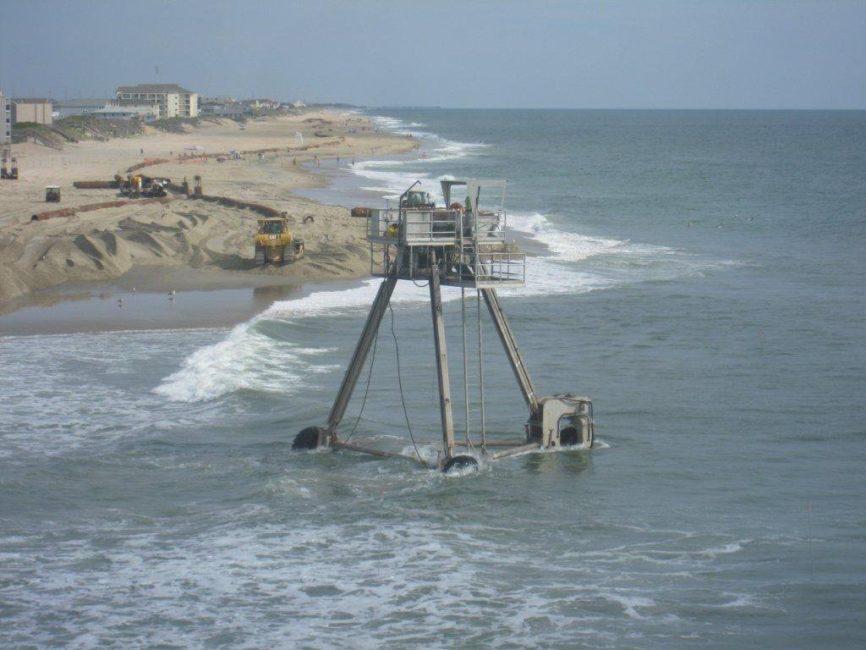With an initial price tag of $38.6 million, nourishing the beaches of northern Dare County is expensive. To pay for it, the county and towns have devised an intra-local agreement that offsets the cost to any one entity.

Funding Formula
Although beach nourishment projects can qualify for federal funds, there are limited or no federal funds available, so Dare County has opted to fund their projects locally. The permitting process for the Dare County nourishment project has been time-consuming and expensive, but it pales in comparison to what is required working through federal agencies; locally funded projects can be managed more efficiently.
After Nags Head completed its largely successful venture in 2011—which at the time was the largest locally funded nourishment project in the country—Duck, Kitty Hawk and Kill Devil Hills and the county took note and started to explore in detail whether it made sense for them to pursue a local option.
The formula calls for a roughly 50/50 split payment for the project between the towns and the county. In the summer of 2015, the towns of Duck, Kitty Hawk and Kill Devil Hills had entered into agreements with Dare County.
Funding Sources
Occupancy Tax
Dare County funds come from dedicated tax revenue tied to occupancy tax.
The County is using a 2% (of the total 6%) occupancy tax to fund beach nourishment, which currently generates about $8.6 million per year. However, not all of the funds designated for beach nourishment are being used for its original purpose.
Some of the beach nourishment funds have been earmarked for the dredging and maintenance of Oregon Inlet. The fund is also used for shoreline restoration and dune stabilization—planting vegetation and placing sand fencing in dunes.
Because of the additional uses for the funds, the full $8.6 million is not available in any one year. Under any circumstances, the revenue generated from occupancy taxes would not be great enough to cover the County’s share of nourishment.
To make up the shortfall, Dare County issued a $10 million Limited Obligation Bond in 2016.
The Towns
Each town is responsible for raising their share of the beach nourishment price tag. Without some form of additional revenue, none of the towns would be able to pay their share.
Through a combination of bonds and an increase in ad valorem taxes, the towns have generated the revenue to pay their share.
To increase the ad valorem taxes, the towns created special tax designations called Municipal Service Districts (MSD).
Municipal Service Districts
A MSD is a special taxing district whose purpose is to enhance but not replace existing government services.
What the three towns chose to do is raise ad valorem taxes for everyone modestly, but impose an additional tax on properties immediately adjacent to the beach. The logic behind that strategy was that the entire town would benefit from beach nourishment, but beachfront properties would have a disproportionate benefit from having their property preserved and rental income sustained.
In order to apply different property taxes to separate areas of the towns, MSDs had to be established. In each of the three towns and the country project in Buxton, the MSDs are specifically designated depending on the area. In Duck, for example, there are two MSD areas specifically in the nourishment zone, one for beachfront homes and one for all homes in the nourishment zone. In Kitty Hawk, there are two MSD zones, one for properties east and along Highway 158, and one for the entire rest of the town. As the various projects are unique, so are the MSD zones.
